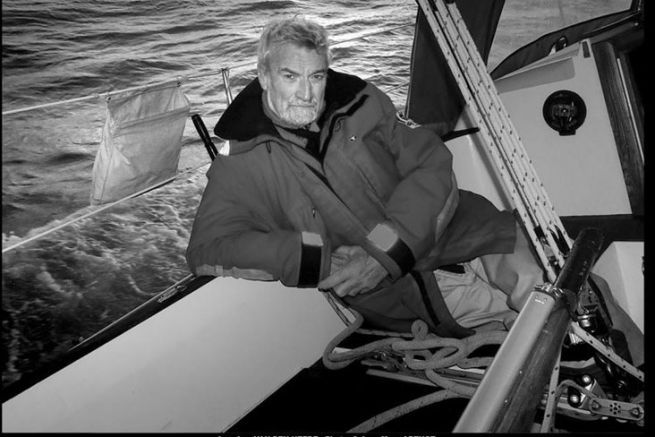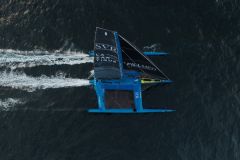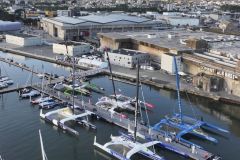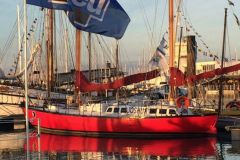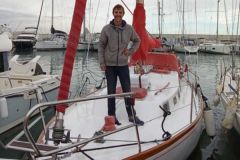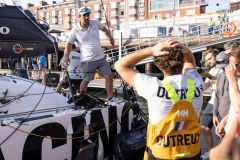Jean-Luc Van Den Heede is known for its 5 single-handed round-the-world voyages, the hardest of which is considered the Everest of Sailing, the round-the-world voyage from east to west against the prevailing winds. A record achieved in 122 days in 2004 and still unbeaten today. In June 2018, the sailor took the helm again to take part in an atypical race: the Golden Globe Race .
You have already completed 5 round-the-world races, why would you want to participate in the Golden Globe Race?
In 1968, I was 23 years old. At the time, I followed the race. With successive retirements and the victory of Sir Robin Knox-Johnston... I also saw the incredible odyssey of Bernard Moitessier. Even if the means of communication were not the same as today, he was still on the cover of Paris Match! In 1969, I was too young to take part, I didn't want to wait until I was too old to miss this new edition as well.
Why choose to go on a race?
I'm a runner. I entered the Golden Globe Race primarily to compete. I'm not an adventurer. I think it's a great idea to get back into the racing conditions of the time, with the means of the time. Apart from the safety equipment and clothing, which is more effective than oilskins and pea jacket, we'll be in the same configurations as the 1969 participants: no communication, slow boats... But I'm still going to try to go as fast as possible.
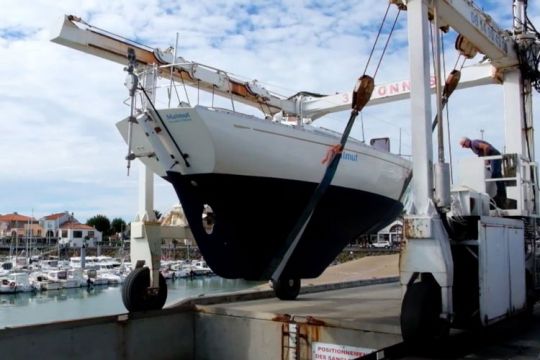
Why did you choose a '36 Rulstler to leave?
The rules of the race give us the choice between about twenty production yachts ( see the subject with the list of accepted boats ). I took this list and looked at the characteristics of each one to try to find the fastest one. I stopped on the Rustler 36. I feel like it's one of the slowest! Besides, I didn't want a boat that's too old. Polyester gets old and I wanted to set off to the South Seas with a boat I could trust. Mine dates back to 1990.
What modifications do you make on the boat?
We're not allowed to modify the boat. It must remain in its original configuration with the interior fittings. For my part, I'm installing a watertight bulkhead in the forward cabin and probably a second one in the saloon. I've also removed the teak deck and above all I've changed all the rigging to start from scratch. Otherwise the boat doesn't change. You can see the two turned solid wood posts at the entrance to the saloon at the foot of the companionway.
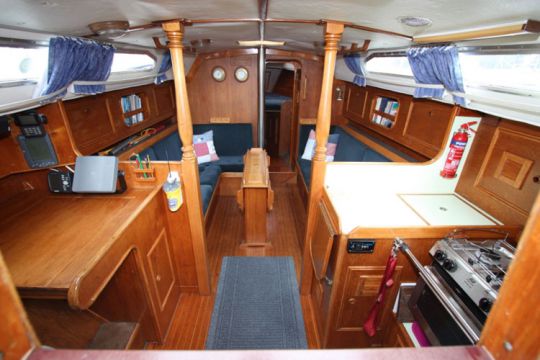
Isn't it dangerous to go into the South Seas with these boats?
As far as security is concerned, the organisation is quite fussy. It doesn't just ask to know how to rig a makeshift rig. It asks us to build it and to sail a course with it. That's what I did, taking advantage of my change of mast. I rigged the spinnaker pole as a mast and installed 2 sails. In the same way, we are asked to know how to sail without a rudder. I did a course with the rudder locked to validate this operation. But as the rudder is so hard on the Rustler, I manage to sail with just the shovel of my windvane gear. In comparison, races like the Vendée Globe check safety, but never require sea trials before the start.
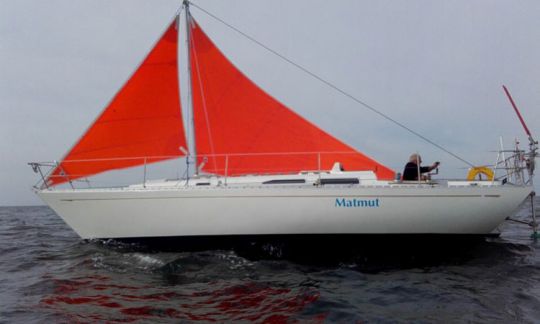
How long do you plan to stay at sea?
It's an adventure we're about to discover. We're all going off into the unknown. The longest time alone at sea was 122 days. This time, we could put in 300... We're going to find ourselves in situations we don't know any more. How do you secure your position in the South when the sun doesn't show up. My windvane gear follows the wind. If the wind changes while I'm sleeping, how do I maintain my self-esteem? We have no course change alarm, no electronic anemometer, no GPS. Even the camera and film will be silver, with film. This will also force us not to trigger the alarm at all times.
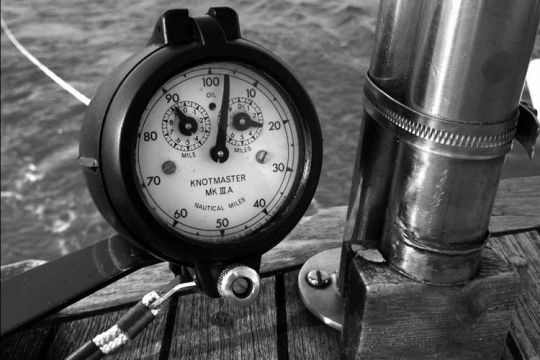
The regulation imposes crossing points, why?
To follow more or less the same route as Sir Robin Knox-Johnston, the regulations forbid us to go too far south. We must not exceed 45° South in the Indian Ocean and 48° South in the Pacific. In addition, we have crossing points close to land so we can drop off our photo and video films. We are not going to use a slingshot like Moitessier, but without stopping over, we will deliver our images.
What about food, what do you have planned?
Since I don't have a watermaker on board (it's forbidden by the regulations to stay in the same situation as the sailing boats of the time), I take cooked meals with me. I have planned 8 months of food. Robin took 10 months... For fresh water, my mainsail will be equipped with a gutter to collect rainwater. I hope it's enough to fill my tanks.
Do you still keep a connection to the land during the race?
The only link will be a small tag on which it is possible to send messages of 100 characters, a kind of tweet. But as this tag has no keyboard, you have to write them by scrolling through the letters. It's quite tedious, but we should have time for that! The regulations also require us to have solar panels to supply electricity to these tags. For electricity production, I'm adding a hydrogenerator. Otherwise, we'll have an Iridium satellite phone on board with the only possibility of contacting the race committee. We should have one contact per week to give news and power the race site. I also have an SSB (short wave radio) on board to try to reach ground stations. But it's not as functional or as clear as the telephone!

Your boat is called Matmut, is it your sponsor?
Yes in the rules, we have the right to sponsor, but the hull must be single-coloured. The letters to write the name of the boat must not exceed 15 cm. Only 2 m2 on the mainsail and the whole spinnaker are free of any inscription. The boat's christening name is Mojito. This is the name given to the boat by its first owner and he has kept it since the beginning.
